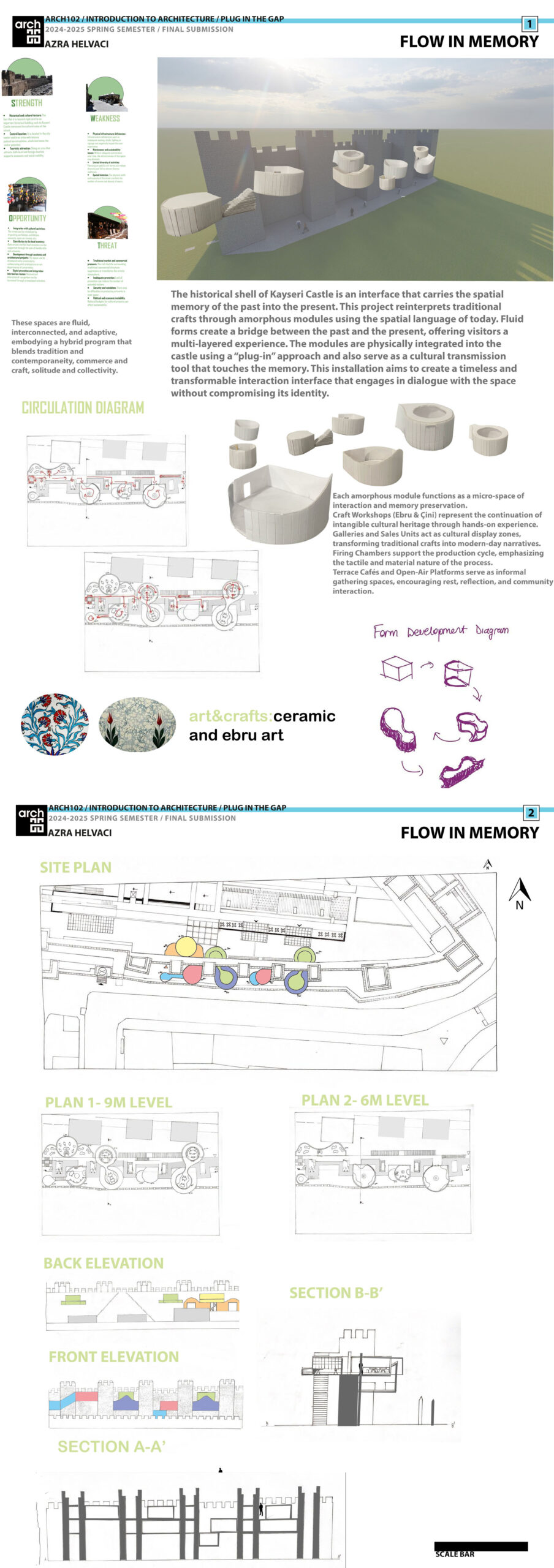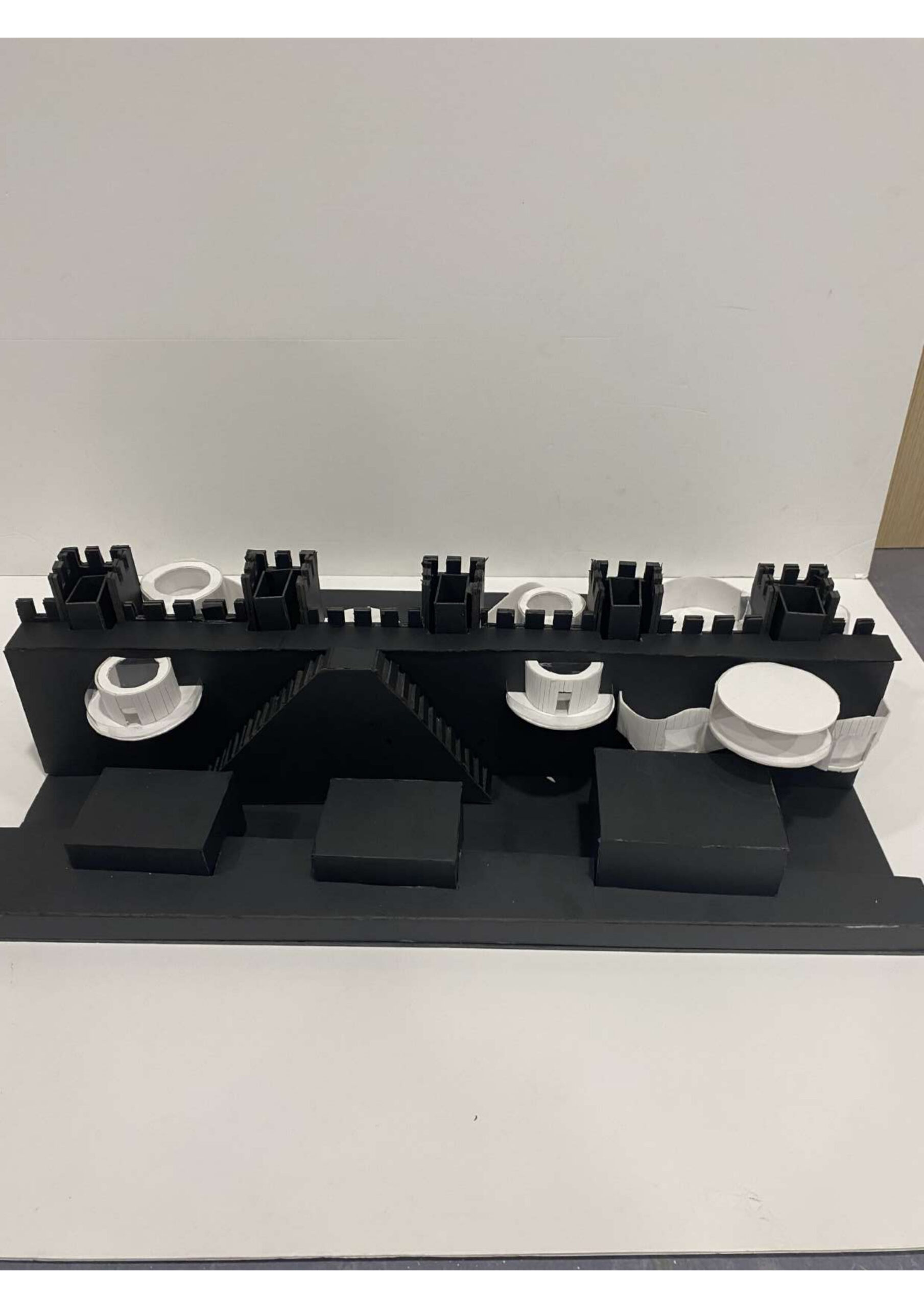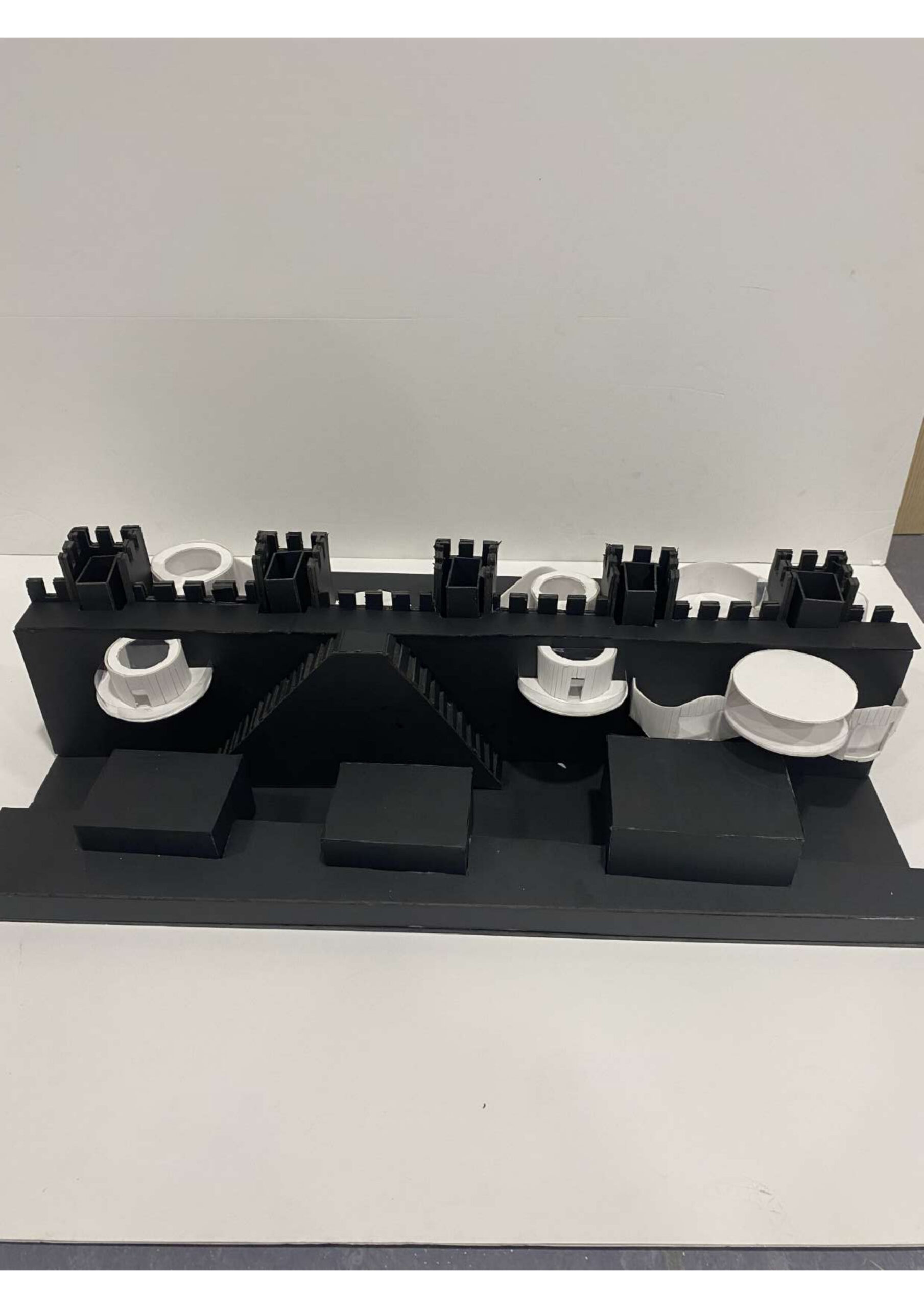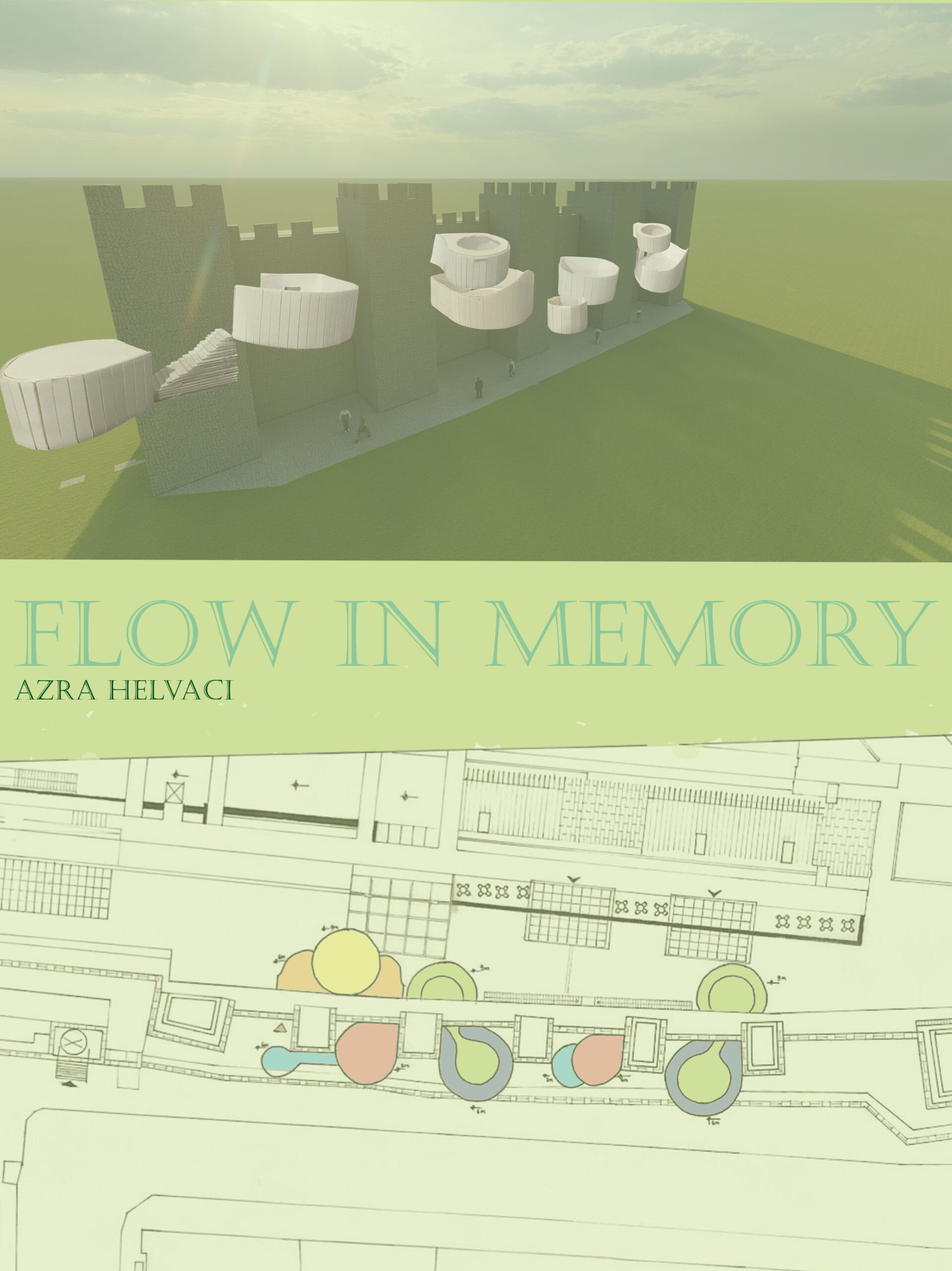FLOW IN MEMORY / Azra Helvacı
Plug-in Intervention to Kayseri Castle with a Spatial Interpretation of Flowing Memory
Kayseri Castle, located in the city center, has been a symbolic structure representing the memory of the city for centuries. However, in today’s urban dynamic, the fortress has become a static and functionally limited object. The concept of the project titled “Flow in Memory” aims to transform this stagnant structure through contemporary, flowing, and interactive amorphous plug-in modules. The project envisions a new layer added to the site without damaging its historical character—an interface that reintroduces cultural memory through spatial and artistic experience.
The keywords of the project, “flow” and “memory,” serve as both formal and functional backbones of the design. “Flow” refers not only to physical movement but also to the circulation of knowledge, art, and cultural production. “Memory” expresses the reinterpretation of historical identity through contemporary artistic engagement. In this context, the project suggests a spatial language that is temporary yet impactful, offering experiential engagement rather than preservation alone.
Detailed site analyses justify the necessity of this approach. Noise analysis reveals high sound exposure around the castle, which poses a challenge for focused workshop activities. Plug-in modules, therefore, function as buffers, creating calm production spaces. Sun path analysis highlights intense light from the south and west facades, addressed through semi-transparent surfaces for controlled daylight. Road and circulation analyses show pedestrian movement is concentrated on the west and south, shaping the positioning of the modules accordingly.
The designed modules include various functions, each contributing to the cultural and experiential ecosystem. The marbling (ebru) art workshops are semi-private areas for hands-on traditional production, also offering small-group experiences. Ceramic tile (çini) modules include both production and gallery spaces, allowing visitors to observe the creation process and view final works. These are complemented by kiln modules for technical completion.
Sales points allow visitors to purchase local crafts and artworks, supporting visibility and local economy. Cafes and terrace areas act as communal, relaxing, and experiential spaces, offering moments of rest and reflection after participating in workshops or viewing exhibitions.
Formally, all modules adopt amorphous and fluid shapes in deliberate contrast to the rigid geometry of the castle. This tension generates a visual dialogue between history and contemporaneity. Materials such as polycarbonate panels, lightweight steel structures, and temporary fixtures enable flexibility and reusability. As a result, the intervention becomes both sustainable and adaptable.
The user experience is designed around an active participation scenario. The visitor is welcomed by an information unit, joins a marbling or ceramic workshop, sees their creations displayed in the gallery, explores the sales area, and concludes their journey in the terrace or café zones. This loop transforms the castle from a passive tourist site into a living cultural node.
In conclusion, the “Flow in Memory” project seeks to redefine Kayseri Castle not as a static heritage object but as a productive, participatory, and contemporary cultural environment. While respecting its historic significance, the project introduces a dynamic layer of creative interaction, offering a new spatial reading of collective memory through architectural means. 



